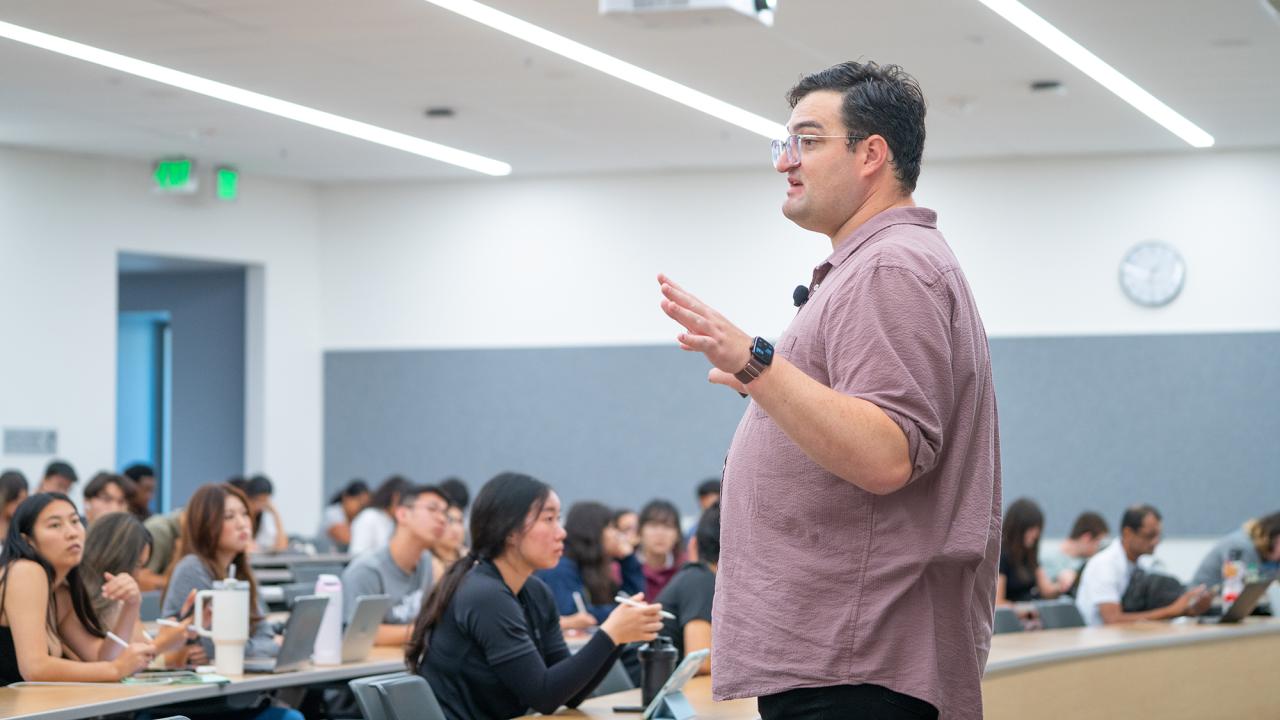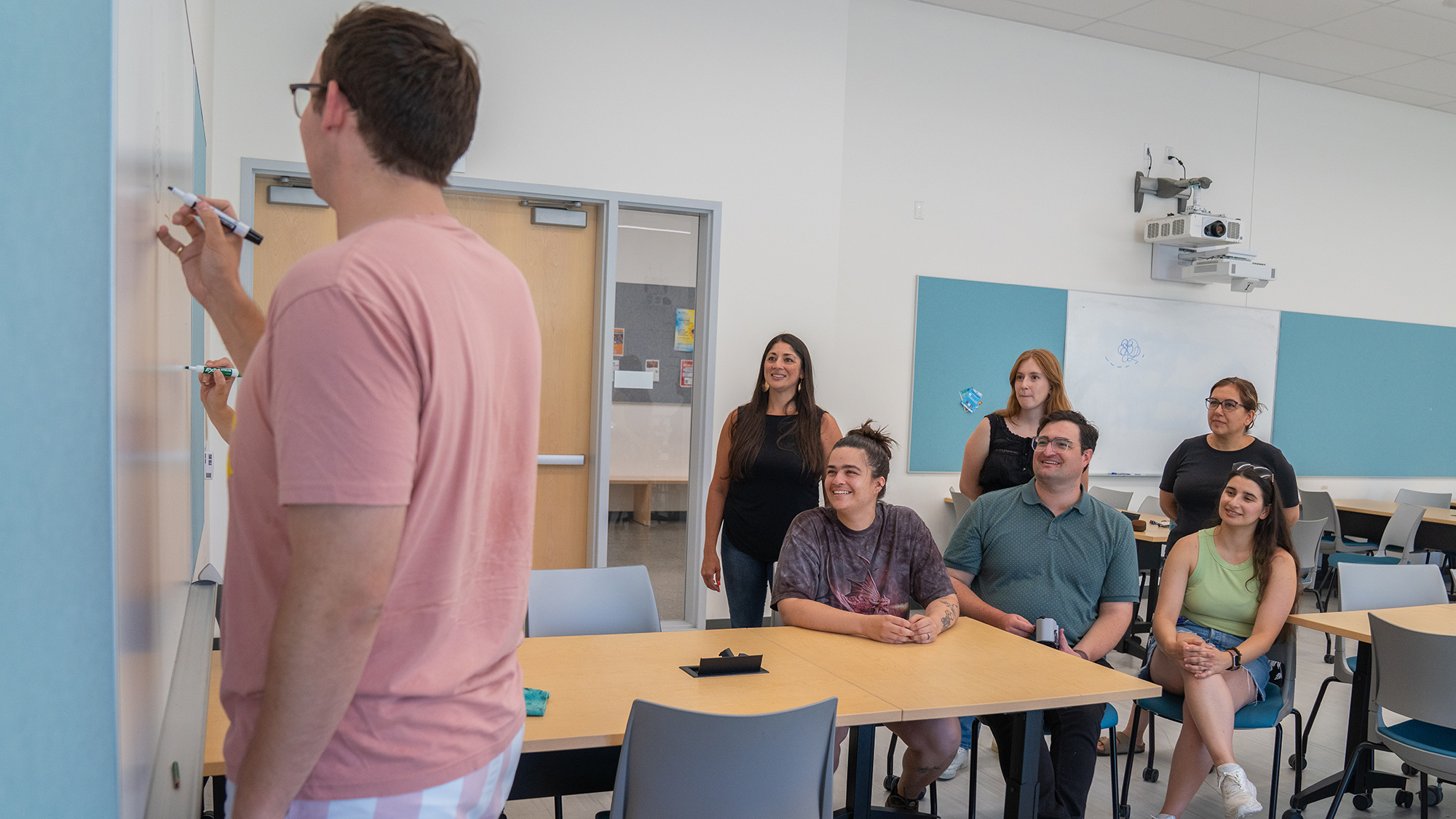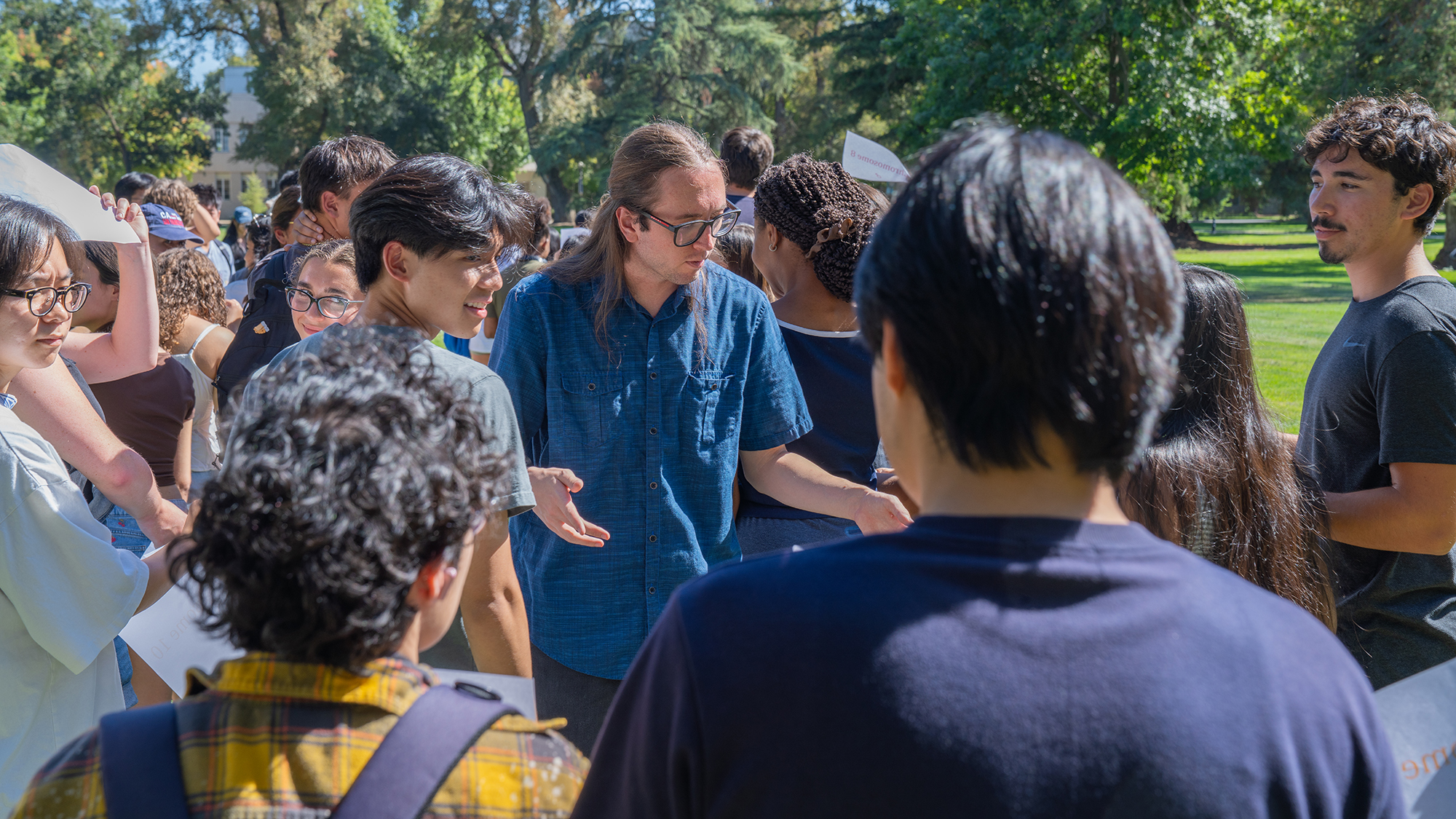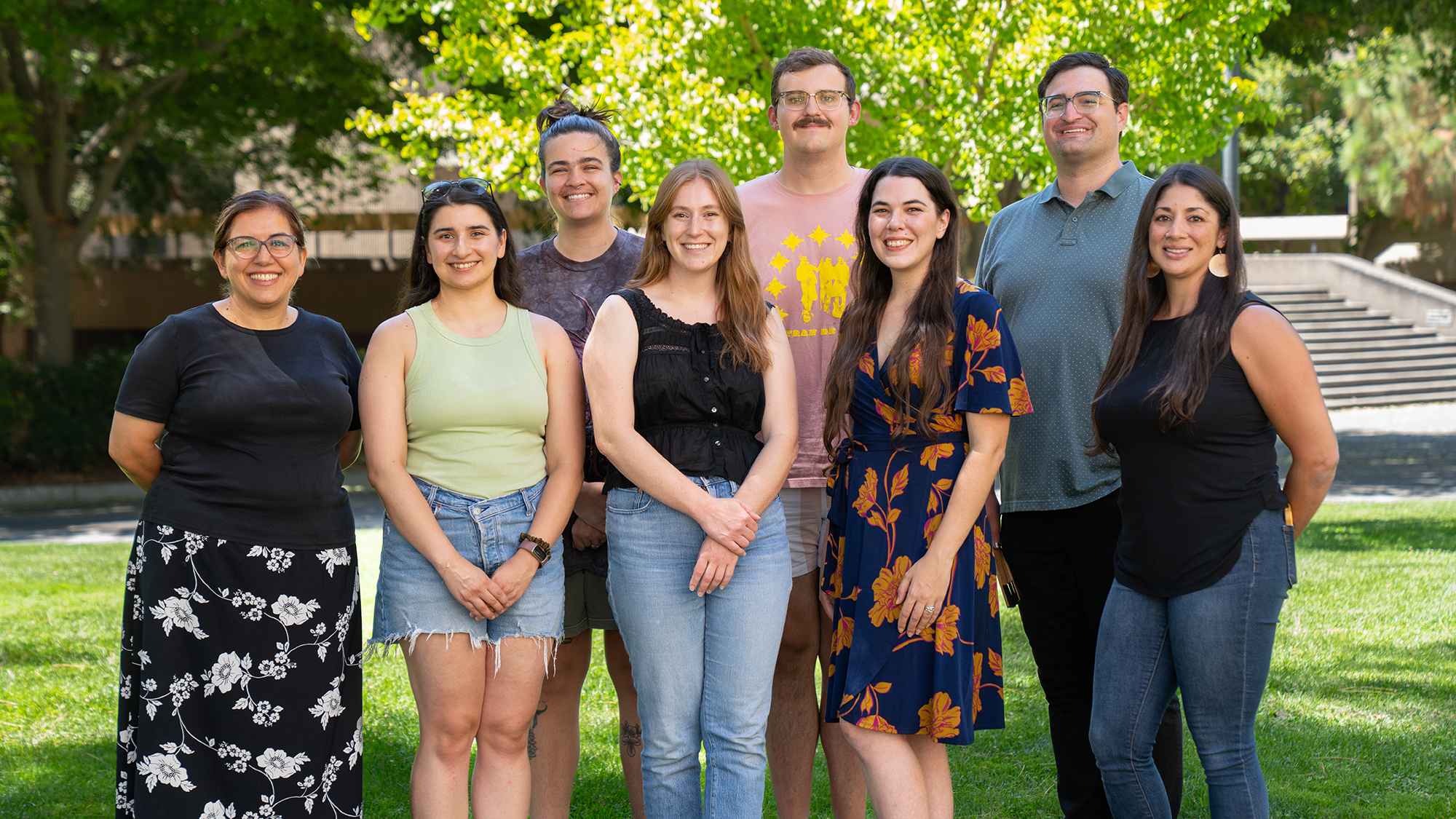
Bringing Life Sciences Teaching to Graduate Education
FUSE program helps graduate students teach biology with confidence
Although teaching is a core part of being a professor, most academics learn how to teach on the job. CBS’s Future Undergraduate Science Educators (FUSE) program is changing that.
FUSE, which launched in 2021, provides biology-specific teacher training to CBS graduate students. The program’s dual goals are to improve the quality of undergraduate science education and to help teaching-focused CBS graduates find tenure-track positions sooner. In a study published June 5 in the Journal of Microbiology and Biology Education, FUSE’s co-directors Marina Ellefson and Mona Monfared highlight the program’s success and impact in its first three years.
“We wanted to shrink the time between graduating with a Ph.D. and getting that first tenure-track teaching position,” said Monfared. “We’re seeing that gap dissolve completely. It's very exciting.”
FUSE-ing teacher training and research
Ellefson and Monfared, who are both associate professors of teaching in the Department of Molecular and Cellular Biology, began developing FUSE in 2015, when they joined UC Davis.
“Teaching is a large part of a faculty member’s role, but in graduate school most of the emphasis is on research training,” said Monfared. “We wanted to pull together all the things we had learned on our own into something more formal and structured.”
At most universities, graduate students receive TA training through a centralized unit — at UC Davis, the Center for Educational Effectiveness (CEE). This training provides the general basics of successful instruction and a good foundation for educational principles. The FUSE program acts as a focused supplement, with training specifically tailored to life sciences teaching.
“Teaching in the arts or humanities is very different than in STEM,” said Monfared. “FUSE’s model is unique in that both teacher training and professional development happen within a life sciences setting. Having pedagogical mentors in your discipline is key.”
FUSE’s unique structure was spurred by discussions with CBS graduate students, who wanted discipline-specific pedagogy, in addition to input from stakeholders within CBS, Graduate Studies, and CEE.
“The positive feedback and support we got from college leadership and collaborators across campus really allowed us create a program that helps students graduate with a strong foundation of expertise they can build on for the rest of their careers,” said Ellefson.

Giving students the flexibility to flourish
The FUSE program involves 12 units of graduate coursework, which students can complete at their own pace. “We structured FUSE so that there'd be maximum flexibility,” said Monfared. “We work with each student to make sure that their path suits them and their research trajectory.”
FUSE students are trained in evidence-based teaching practices and given the opportunity to engage in mentored teaching experiences. Through seminar courses, they explore different teaching-related careers in higher education and build a teaching portfolio and pedagogy-focused CV. As a capstone, the students independently develop and deliver a teaching practicum which can be anything from a series of guest lectures in a class, to being the class’s instructor of record.
“Every aspect of FUSE — from the science of teaching and learning to the one-on-one mentorship through the teaching practicum — solidified my passion for teaching and pulled back the curtain on how to get involved in undergraduate education,” said Angelica Guercio, a former FUSE scholar who is now an assistant professor of teaching in the Department of Molecular and Cellular Biology.
Students who complete the program receive a Graduate Academic Certificate. This formal, transcript-level recognition of teacher training is unusual within graduate programs.
“We're hoping that FUSE can be a model for other colleges” said Ellefson. “Graduate students are future faculty, and graduate school is a time when we can have a positive impact on how people approach and value higher education in research.”

Finding synergy between teaching and research
In its first three years (2021-2023), FUSE admitted 23 students, 15 of whom completed the program by Fall 2024. Surveys revealed that most FUSE students found the teaching practicum and extensive mentoring to be the most valuable parts of the program. Many students also placed high value on the community within FUSE.
“Developing a network of people who are like-minded in caring about teaching and learning has probably been the most rewarding part of my job,” said Ellefson.
And perhaps surprisingly, most students reported that participating in FUSE positively impacted their research productivity.
“This shows how development of your research and identity as a scientist is not in opposition to your identity and development as a teacher — they're actually synergistic,” said Monfared.
“Because of FUSE, I understand the value of evolving teaching practices that focus on helping students become the best academic versions of themselves,” said former FUSE scholar Iván Olaya, who is now undertaking a postdoctoral fellowship through the teaching-focused IRACDA program at UCLA. “If it wasn't for FUSE, Mona, and Marina, I don't think I would be on the journey to become a Professor of Teaching, and for that I am deeply grateful.”
Launching teaching careers
Ellefson and Monfared are collecting data to monitor FUSE’s long-term impact, but they’ve already seen signs of its potential to springboard careers. “We have absolutely seen FUSE help launch our students’ careers — we've had students get full-time faculty positions right out of graduate school,” said Monfared. “This is exactly what we were hoping to do, and the feedback from those students is that they wouldn't have this job if it wasn't for the program.”

Media Resources
- Liana Wait is a freelance science writer based in Philadelphia. She has a Ph.D. in ecology and evolutionary biology and specializes in writing about the life sciences.
